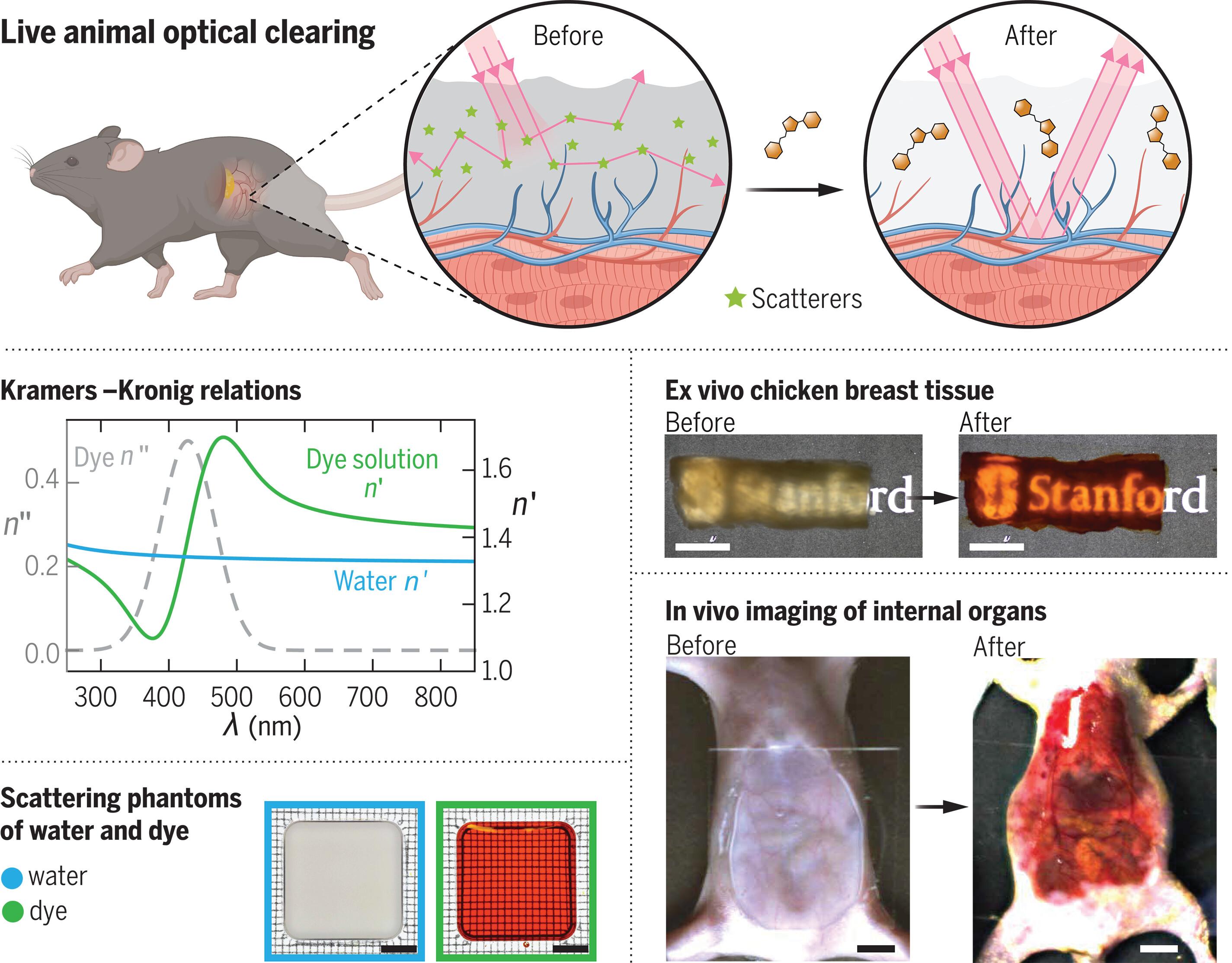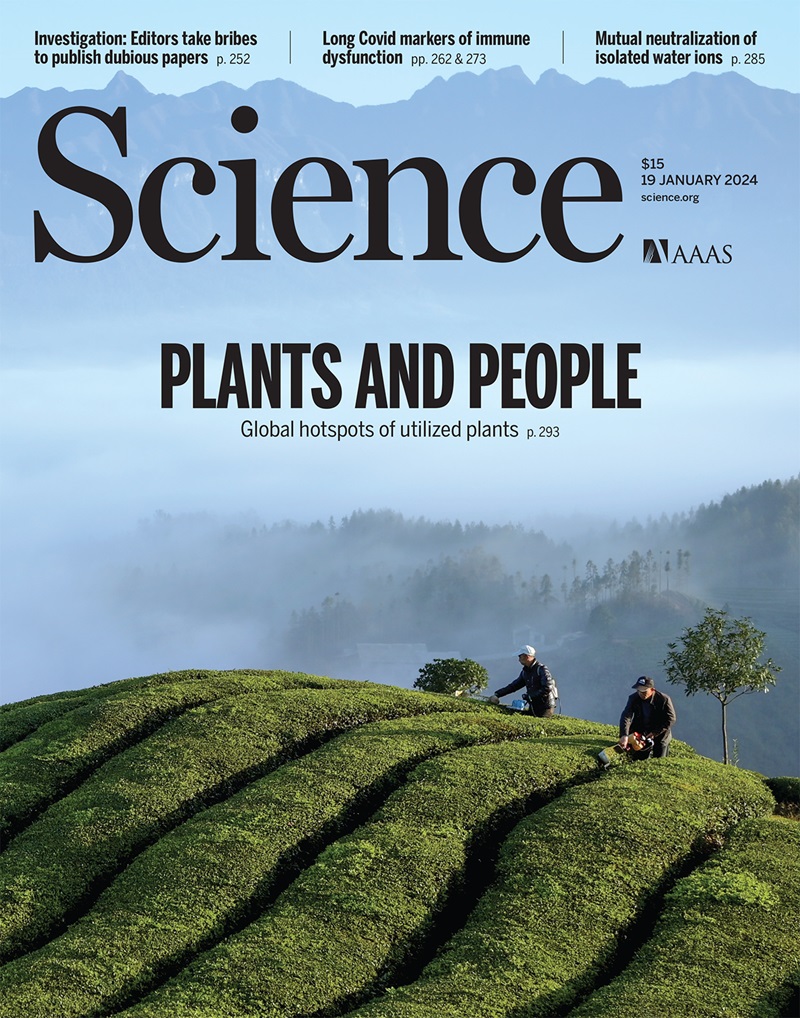用吸收分子实现活体动物的光学透明。
IF 44.7
1区 综合性期刊
Q1 MULTIDISCIPLINARY SCIENCES
引用次数: 0
摘要
光学成像在生物学和医学中发挥着重要作用,但在活体组织中却受到光散射的阻碍。我们报告了一个与直觉相反的观察结果,即强吸收分子可以在活体动物中实现光学透明。我们探索了这一观察结果背后的物理学原理,发现当强吸收分子溶解在水中时,它们可以通过克拉默-克罗尼格关系改变水介质的折射率,使之与脂质等高折射率组织成分的折射率相匹配。我们已经证明,我们的直接方法可以使活体小鼠的身体可逆地变得透明,从而实现对各种深层结构和活动的可视化。这项工作表明,在寻找高性能光学清除剂时,应将重点放在强吸收分子上。本文章由计算机程序翻译,如有差异,请以英文原文为准。

Achieving optical transparency in live animals with absorbing molecules
Optical imaging plays a central role in biology and medicine but is hindered by light scattering in live tissue. We report the counterintuitive observation that strongly absorbing molecules can achieve optical transparency in live animals. We explored the physics behind this observation and found that when strongly absorbing molecules dissolve in water, they can modify the refractive index of the aqueous medium through the Kramers-Kronig relations to match that of high-index tissue components such as lipids. We have demonstrated that our straightforward approach can reversibly render a live mouse body transparent to allow visualization of a wide range of deep-seated structures and activities. This work suggests that the search for high-performance optical clearing agents should focus on strongly absorbing molecules.
求助全文
通过发布文献求助,成功后即可免费获取论文全文。
去求助
来源期刊

Science
综合性期刊-综合性期刊
CiteScore
61.10
自引率
0.90%
发文量
0
审稿时长
2.1 months
期刊介绍:
Science is a leading outlet for scientific news, commentary, and cutting-edge research. Through its print and online incarnations, Science reaches an estimated worldwide readership of more than one million. Science’s authorship is global too, and its articles consistently rank among the world's most cited research.
Science serves as a forum for discussion of important issues related to the advancement of science by publishing material on which a consensus has been reached as well as including the presentation of minority or conflicting points of view. Accordingly, all articles published in Science—including editorials, news and comment, and book reviews—are signed and reflect the individual views of the authors and not official points of view adopted by AAAS or the institutions with which the authors are affiliated.
Science seeks to publish those papers that are most influential in their fields or across fields and that will significantly advance scientific understanding. Selected papers should present novel and broadly important data, syntheses, or concepts. They should merit recognition by the wider scientific community and general public provided by publication in Science, beyond that provided by specialty journals. Science welcomes submissions from all fields of science and from any source. The editors are committed to the prompt evaluation and publication of submitted papers while upholding high standards that support reproducibility of published research. Science is published weekly; selected papers are published online ahead of print.
 求助内容:
求助内容: 应助结果提醒方式:
应助结果提醒方式:


